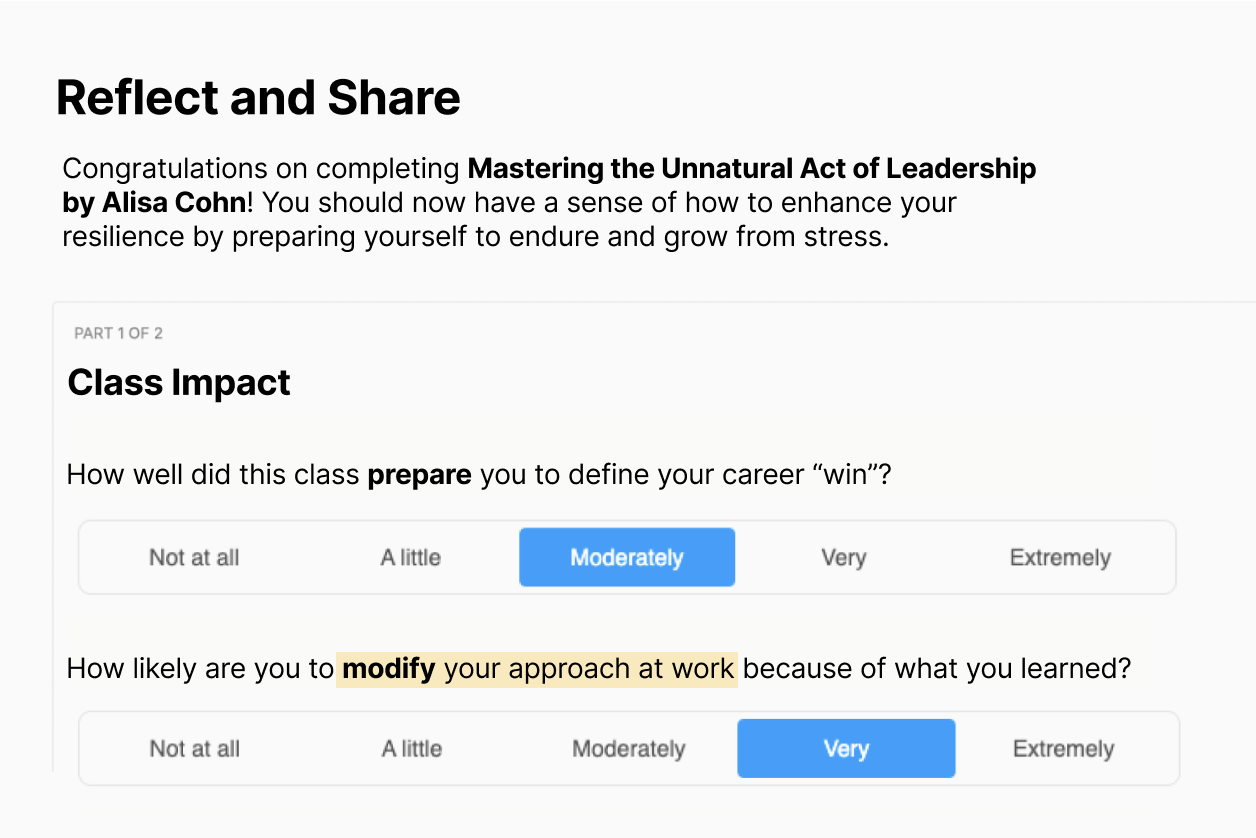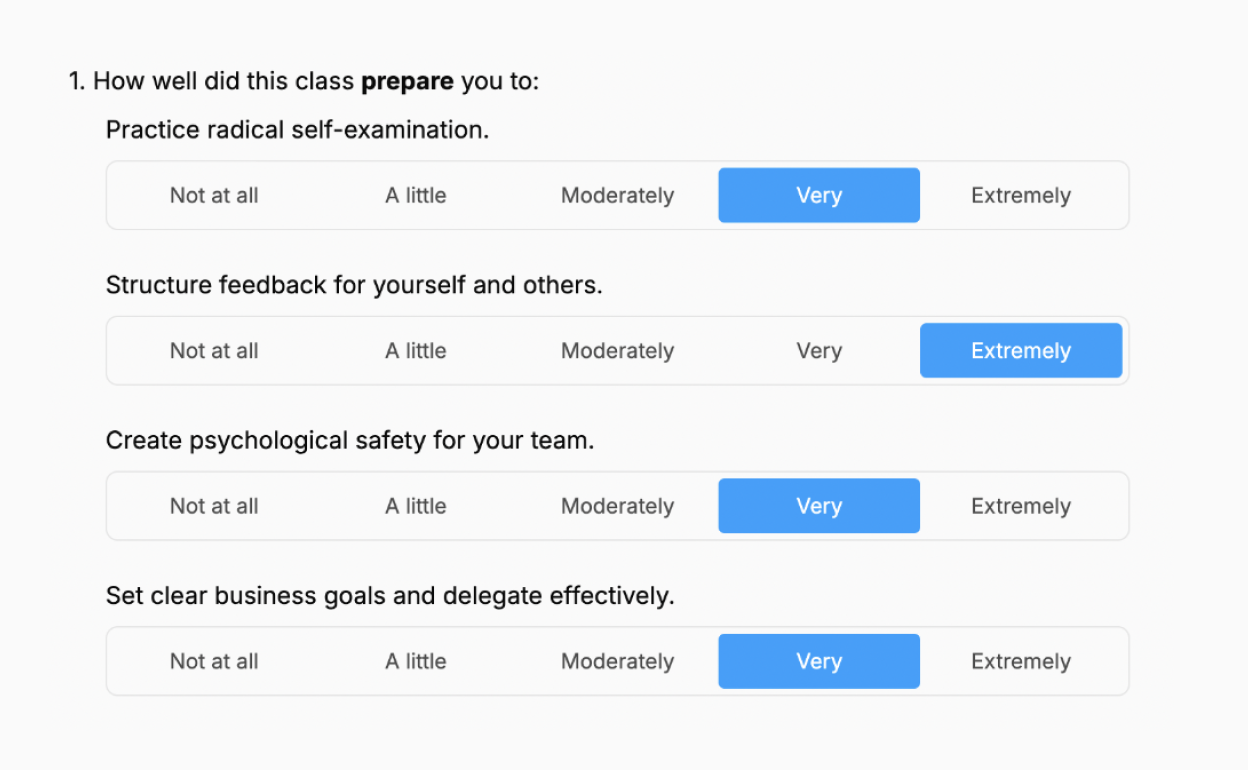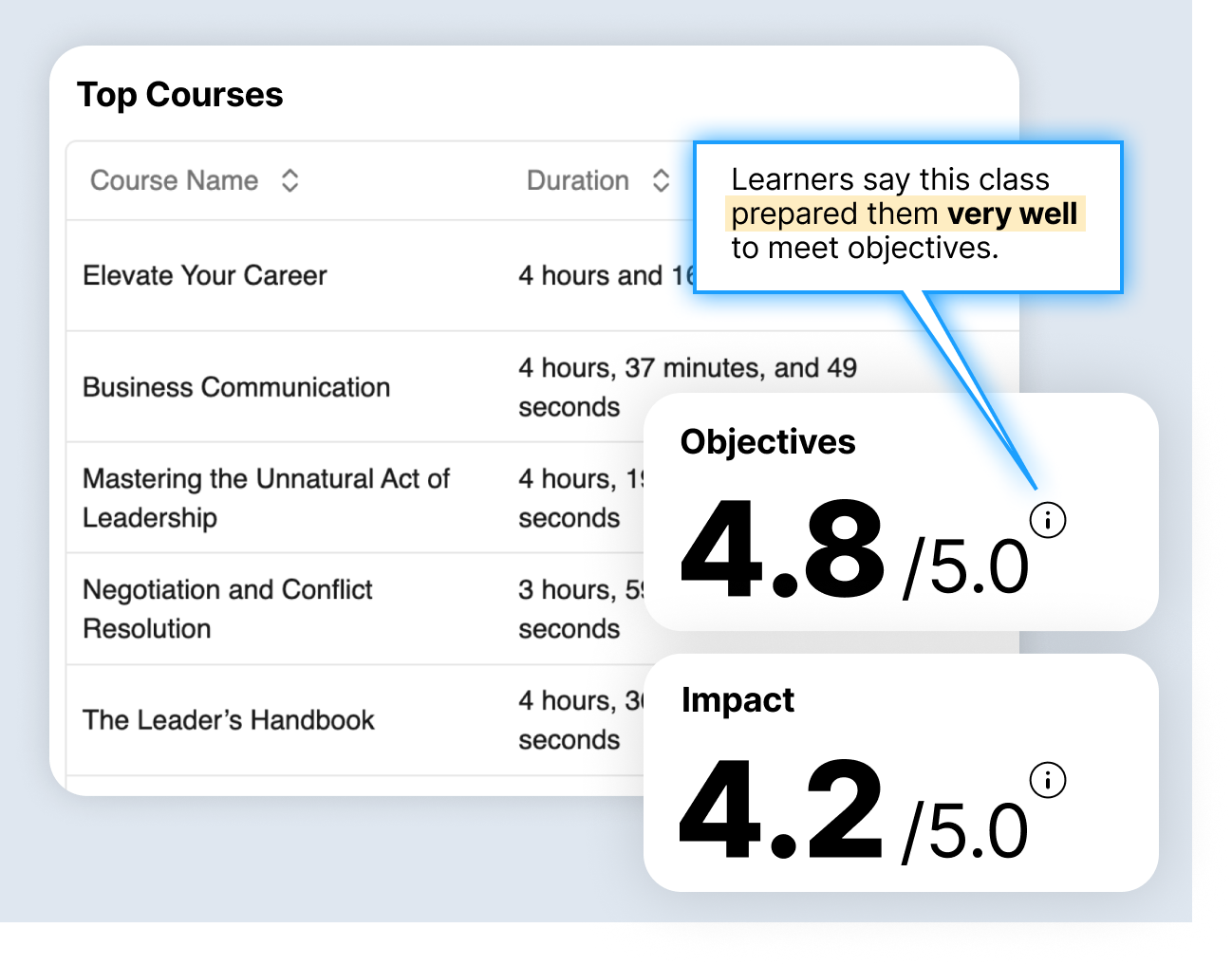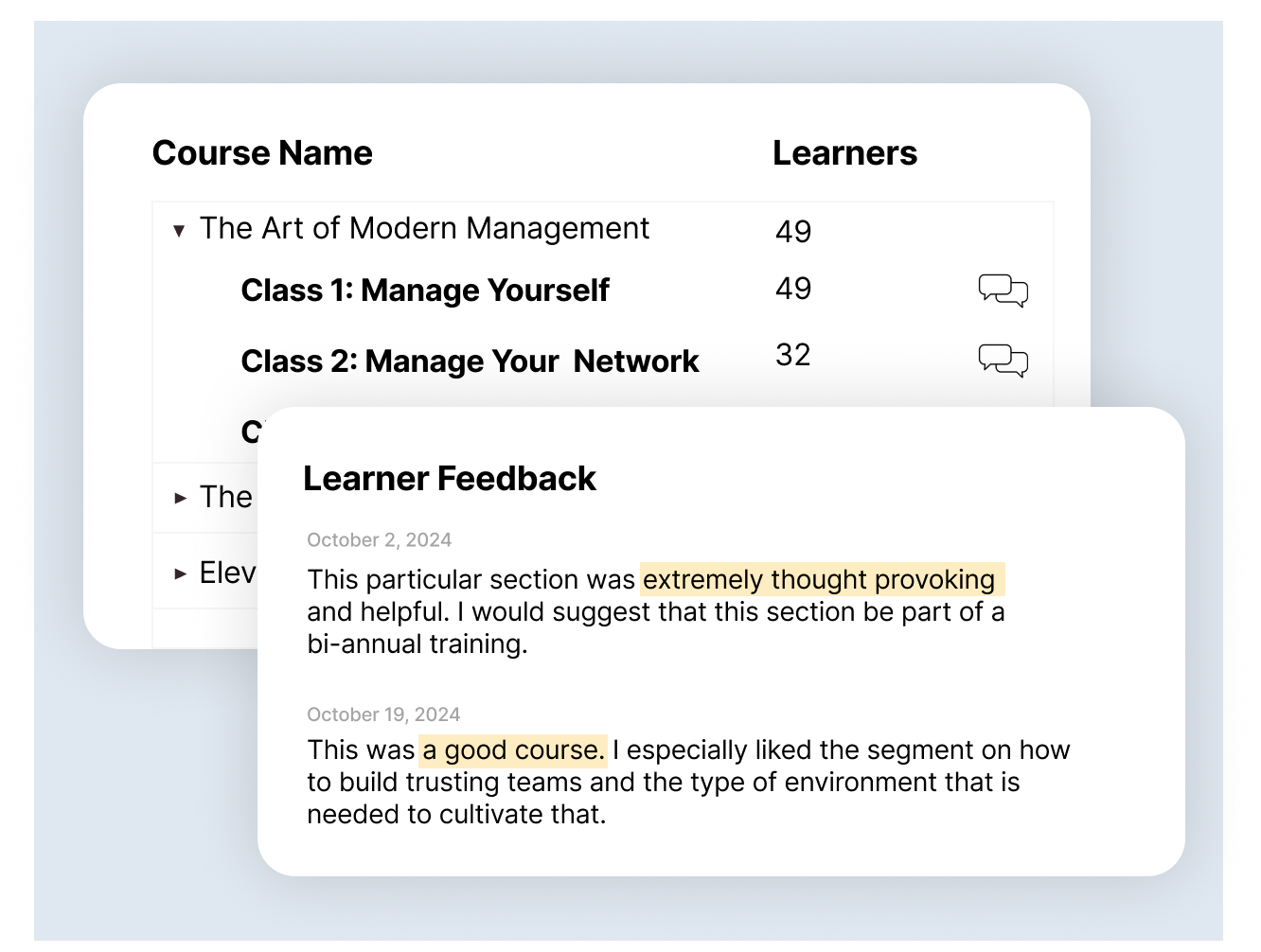Gain deeper insights with seamless learner surveys.

Are you tired of relying solely on leading indicators like watchtime to analyze learning programs? Are you frustrated with having to devise your own ways to measure what matters most to your organization?
With Big Think+ Assessments, you can quickly evaluate the true impact of content without the hassle of third-party tools.
Designed to provide invaluable insights into the effectiveness of your learning programs, Assessments empower learning managers to make data-driven decisions that propel their teams forward.
The ideas, missions, and reflections within a Big Think+ Course can be transformative for learners. But how do you know for sure? With Assessments, learners are prompted to engage in a 3-minute survey after each Class within a Course, providing feedback on the quality and impact of the content they just experienced. Surveys are divided into three basic dimensions.
1. Objectives
How well the module prepared the learner to reach each of the 3-5 stated learning objectives from the Class.

2. Impact
How likely an employee is to modify their behavior based on what they have learned.

3. Feedback
Requests and open-ended feedback about the class.

Each dimension of Big Think+ Assessments is viewable for administrators in Course Analytics. Taken together with active usage metrics, video completions, and public discussion board activity, Assessments represent an important addition to the larger constellation of measures that learning leaders can use to gauge real impact.
Armed with this holistic set of information, teams can identify the big moments driving learning and growth across the organization. Some common use cases for Assessments are:
- Identify skill gaps: Are learners feeling well-prepared for decision making but need more learning supports for fostering empathy? Our Objective Assessments will tell you where to direct learners in your next learning program.
- Enable action: Are Objective scores high but Impact scores low? Perhaps there are barriers blocking learners from translating insights into their day-to-day work.
- Close the feedback loop: With open-ended feedback flowing in straight from learners, you’ll gather fresh insights in real-time that can inform your next program or help you identify organizational barriers to work through.

